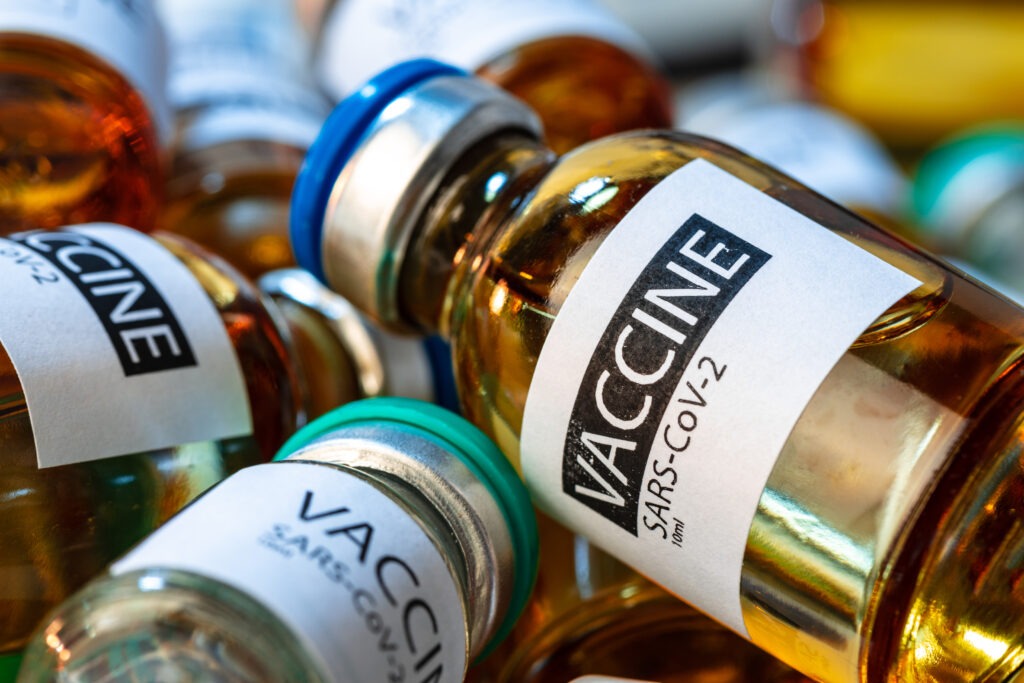Gel packs in the pharmaceutical industry are crucial for ensuring the cold chain doesn’t break. But why?
A package leaves a lab. Inside is a pharmaceutical product that took years to develop and test. It’s destined for a clinic on the other side of the world. The product is highly effective, meticulously crafted, and life-saving. But all of that depends on one thing: maintaining the right temperature from start to finish.
Temperature isn’t just a logistical challenge; it’s the foundation of product integrity. Whether it’s a biologic, a vaccine, or insulin, every degree matters.

Pharmaceutical professionals know the stakes. A slight deviation outside of the required temperature range can compromise product stability, safety, and efficacy. Medicines like monoclonal antibodies or mRNA vaccines, for instance, are incredibly sensitive to thermal changes.
Even in controlled environments, unexpected challenges arise:
This is where gel packs in the pharmaceutical industry come into play. They’re not just passive cooling elements; they are highly engineered tools designed to absorb and release heat precisely when needed.
Gel packs ensure that products remain within their required temperature range throughout the journey, even in the face of uncertainty. Their function might seem simple, but their value is immeasurable.

The true innovation behind gel packs lies in their composition. Many are made with phase-change materials (PCMs), which freeze and thaw at specific temperatures. This capability enables gel packs to maintain precise temperature ranges for extended periods.
For pharmaceuticals requiring storage between 2°C and 8°C, gel packs containing water-based PCMs are common. Products needing ultra-cold storage, such as -20°C or -70°C, rely on more advanced formulations. The choice of material directly impacts the performance of the gel pack, particularly its ability to sustain temperatures over long transit times.
It’s not just about staying cold. Properly engineered gel packs prevent products from freezing when conditions get too extreme. Poorly made packs can create hotspots, freeze vaccines, or fail to regulate the environment inside the insulated container. With high-value medicines on the line, there’s no room for compromise.
Every pharmaceutical professional understands the cost of a cold chain breakdown. It’s not just wasted products. It’s lost revenue, regulatory fines, and reputational damage.
Consider these numbers:
More than just numbers, these failures translate into delayed treatments, disrupted clinical trials, and—most critically—patients left without the medications they need.
This reality underscores the importance of investing in the best tools available, including reliable gel packs that can hold the line against external challenges.
Some might question why gel packs in the pharmaceutical industry remain a cornerstone of cold chain logistics when alternatives like dry ice or electric refrigeration exist. The answer lies in versatility and reliability.
Dry ice, for instance, is effective at ultra-cold temperatures but poses safety concerns, such as off-gassing and handling restrictions. Electrically powered refrigeration is valuable for stationary storage but can be unpredictable in transit due to power outages or mechanical failures.
Gel packs, on the other hand, offer a balance of control, portability, and safety. They integrate seamlessly into insulated containers and don’t require active energy sources. Modern designs have improved their efficiency, with many offering extended thermal protection that rivals or exceeds other options.
Their ability to perform consistently, even in adverse conditions, makes gel packs an irreplaceable part of the cold chain puzzle.
Pharmaceutical supply chains are evolving rapidly. Increased globalisation means products often traverse multiple time zones, climates, and regulatory environments. The rise of biologics, cell therapies, and temperature-sensitive vaccines has only amplified the complexity of cold chain logistics.
A reliable supply chain is built on resilient components, and gel packs are a critical part of that resilience. They reduce risk by acting as a buffer against variables that can’t always be controlled:
Gel packs are designed for these scenarios. When used alongside insulated packaging and robust monitoring tools, they provide a fail-safe that ensures temperature excursions are minimized or entirely avoided.
Not all gel packs are created equal. For procurement managers and logistics teams, selecting the right gel packs is more than a cost decision; it’s a strategic choice that impacts the entire supply chain.
Key considerations should include:
The answers to these questions should guide decision-making. Investing in high-quality gel packs reduces the likelihood of expensive product losses and supports the delivery of medicines that meet strict quality standards.
The global distribution of COVID-19 vaccines was one of the most ambitious cold chain operations in history. Vaccines requiring storage at ultra-cold temperatures presented challenges no one had faced at such scale.
Gel packs were pivotal in meeting these demands. Advanced PCM-based packs kept vaccines stable over long transits, bridging the gap between manufacturing facilities and vaccination sites, even in regions with limited infrastructure.
This moment highlighted the importance of cold chain logistics and the role gel packs play in making the impossible achievable.

Pharmaceutical professionals understand the gravity of their work. Delivering effective medicines to patients isn’t just a job; it’s a responsibility. The tools you choose to support your cold chain operations reflect that commitment.
Review your current cold chain strategy. Evaluate your suppliers. Ask whether your gel packs are meeting the demands of your supply chain.
Because every degree matters. Every shipment matters. And ultimately, every life matters.
Choosing the right gel packs isn’t just about protecting products. It’s about protecting the integrity of the entire supply chain. Step up. Lead. Make decisions that ensure your products arrive exactly as they should.
Gel packs may be silent heroes, but their role in your success is loud and clear. Protect what matters most. Always.

To find out more call our expert team on 0115 931 6969 or contact us for more details.